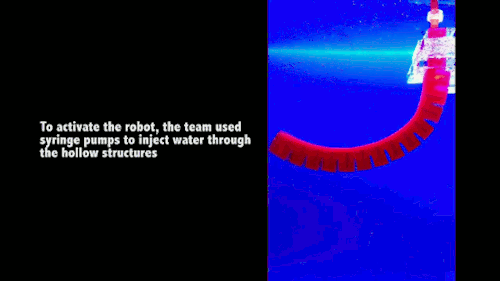You Must Stay Drunk On Writing So Reality Cannot Destroy You.
You must stay drunk on writing so reality cannot destroy you.
Ray Bradbury, Zen in the Art of Writing (via books-n-quotes)
More Posts from Smparticle2 and Others





winter sunrise reflections
by Denny Bitte

Rabies Viruses Reveal Wiring in Transparent Brains
Scientists under the leadership of the University of Bonn have harnessed rabies viruses for assessing the connectivity of nerve cell transplants. Coupled with a green fluorescent protein, the viruses show where replacement cells engrafted into mouse brains have connected to the host neural network.
The research is in Nature Communications. (full open access)








“Conceited, spoiled, and arrogant- all of those things, of course, are true to the character. But she had courage and determination, and that, I think, is why women must secretly admire her.” -Vivien Leigh


Flowers








My Neighbor Totoro | Tonari no Totoro (1988, Japan)
Director: Hayao Miyazaki Cinematographer: Mark Henley

Researchers discover self-assembling 2D and 3D materials
Self-assembly of matter is one of the fundamental principles of nature, directing the growth of larger ordered and functional systems from smaller building blocks. Self-assembly can be observed in all length scales from molecules to galaxies. Now, researchers at the Nanoscience Centre of the University of Jyväskylä and the HYBER Centre of Excellence of Aalto University in Finland report a novel discovery of self-assembling two- and three-dimensional materials that are formed by tiny gold nanoclusters of just a couple of nanometres in size, each having 102 gold atoms and a surface layer of 44 thiol molecules. The study, conducted with funding from the Academy of Finland and the European Research Council, has been published in Angewandte Chemie.
The atomic structure of the 102-atom gold nanocluster was first resolved by the group of Roger D Kornberg at Stanford University in 2007. Since then, several further studies of its properties have been conducted in the Jyväskylä Nanoscience Centre, where it has also been used for electron microscopy imaging of virus structures. The thiol surface of the nanocluster has a large number of acidic groups that can form directed hydrogen bonds to neighbouring nanoclusters and initiate directed self-assembly.
Read more.



A research group at MIT has created a new class of fast-acting, soft robots from hydrogels. The robots are activated by pumping water in or out of hollow, interlocking chambers; depending on the configuration, this can curl or stretch parts of the robot. The hydrogel bots can move quickly enough to catch and release a live fish without harming it. (Which is a feat of speed I can’t even manage.) Because hydrogels are polymer gels consisting primarily of water, the robots could be especially helpful in biomedical applications, where their components may be less likely to be rejected by the body. For more, see MIT News or the original paper. (Image credit: H. Yuk/MIT News, source; research credit: H. Yuk et al.)

Insecticides Mimic Melatonin, Creating Higher Risk of Diabetes
Synthetic chemicals commonly found in insecticides and garden products bind to the receptors that govern our biological clocks, University at Buffalo researchers have found. The research suggests that exposure to these insecticides adversely affects melatonin receptor signaling, creating a higher risk for metabolic diseases such as diabetes.
The research is in Chemical Research in Toxicology. (full access paywall)
-
 vintagemarlene liked this · 11 months ago
vintagemarlene liked this · 11 months ago -
 alpojones reblogged this · 11 months ago
alpojones reblogged this · 11 months ago -
 alpojones liked this · 11 months ago
alpojones liked this · 11 months ago -
 bruisedfruitisstilljuicy reblogged this · 3 years ago
bruisedfruitisstilljuicy reblogged this · 3 years ago -
 bruisedfruitisstilljuicy reblogged this · 3 years ago
bruisedfruitisstilljuicy reblogged this · 3 years ago -
 wadedforu reblogged this · 4 years ago
wadedforu reblogged this · 4 years ago -
 strawberrywhorechata liked this · 4 years ago
strawberrywhorechata liked this · 4 years ago -
 locapeople1 reblogged this · 4 years ago
locapeople1 reblogged this · 4 years ago -
 onetwistedmiracle liked this · 4 years ago
onetwistedmiracle liked this · 4 years ago -
 gatebreaker reblogged this · 4 years ago
gatebreaker reblogged this · 4 years ago -
 gatebreaker liked this · 4 years ago
gatebreaker liked this · 4 years ago -
 amber-fatima liked this · 4 years ago
amber-fatima liked this · 4 years ago -
 jaysanchez-123 reblogged this · 5 years ago
jaysanchez-123 reblogged this · 5 years ago -
 lifeofaie liked this · 5 years ago
lifeofaie liked this · 5 years ago -
 abbydabs200 liked this · 5 years ago
abbydabs200 liked this · 5 years ago -
 elleestcommelalune reblogged this · 5 years ago
elleestcommelalune reblogged this · 5 years ago -
 awanderlustdreamer10 liked this · 5 years ago
awanderlustdreamer10 liked this · 5 years ago -
 poco-loco-post liked this · 6 years ago
poco-loco-post liked this · 6 years ago -
 youmakealittlegirlcry reblogged this · 6 years ago
youmakealittlegirlcry reblogged this · 6 years ago -
 smileatthewolf reblogged this · 6 years ago
smileatthewolf reblogged this · 6 years ago -
 pasdemalice reblogged this · 6 years ago
pasdemalice reblogged this · 6 years ago -
 pasdemalice liked this · 6 years ago
pasdemalice liked this · 6 years ago -
 shipper-of-awesome liked this · 6 years ago
shipper-of-awesome liked this · 6 years ago -
 elleestcommelalune liked this · 6 years ago
elleestcommelalune liked this · 6 years ago -
 txn0008 liked this · 6 years ago
txn0008 liked this · 6 years ago -
 theetherealbutterfly liked this · 6 years ago
theetherealbutterfly liked this · 6 years ago -
 greythegryphon liked this · 6 years ago
greythegryphon liked this · 6 years ago -
 saidtherose reblogged this · 6 years ago
saidtherose reblogged this · 6 years ago -
 random-nerd-queer liked this · 6 years ago
random-nerd-queer liked this · 6 years ago -
 sailor-sleepy liked this · 6 years ago
sailor-sleepy liked this · 6 years ago -
 buymebugs liked this · 6 years ago
buymebugs liked this · 6 years ago -
 rodyaishere liked this · 6 years ago
rodyaishere liked this · 6 years ago -
 vatofrain reblogged this · 6 years ago
vatofrain reblogged this · 6 years ago -
 vatofrain liked this · 6 years ago
vatofrain liked this · 6 years ago -
 artdalek liked this · 6 years ago
artdalek liked this · 6 years ago -
 nb-anne reblogged this · 6 years ago
nb-anne reblogged this · 6 years ago -
 loveowesnodebt reblogged this · 6 years ago
loveowesnodebt reblogged this · 6 years ago -
 celticsidhe liked this · 6 years ago
celticsidhe liked this · 6 years ago -
 uminotenshi liked this · 6 years ago
uminotenshi liked this · 6 years ago -
 xmisguidedhope reblogged this · 6 years ago
xmisguidedhope reblogged this · 6 years ago -
 the-witchesinn reblogged this · 6 years ago
the-witchesinn reblogged this · 6 years ago -
 writordye reblogged this · 6 years ago
writordye reblogged this · 6 years ago -
 xmisguidedhope liked this · 6 years ago
xmisguidedhope liked this · 6 years ago -
 writtenbymoon liked this · 6 years ago
writtenbymoon liked this · 6 years ago -
 spoil3drott3n reblogged this · 6 years ago
spoil3drott3n reblogged this · 6 years ago -
 spoil3drott3n liked this · 6 years ago
spoil3drott3n liked this · 6 years ago